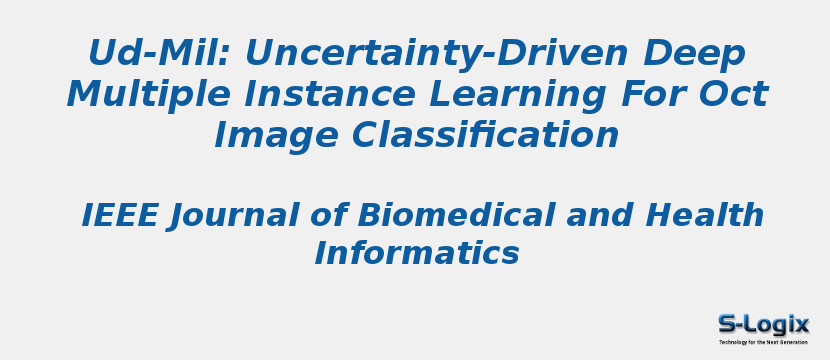Research Area: Machine Learning
Deep learning has achieved remarkable success in the optical coherence tomography (OCT) image classification task with substantial labelled B-scan images available. However, obtaining such fine-grained expert annotations is usually quite difficult and expensive. How to leverage the volume-level labels to develop a robust classifier is very appealing. In this paper, we propose a weakly supervised deep learning framework with uncertainty estimation to address the macula-related disease classification problem from OCT images with the only volume-level label being available. First, a convolutional neural network (CNN) based instance-level classifier is iteratively refined by using the proposed uncertainty-driven deep multiple instance learning scheme. To our best knowledge, we are the first to incorporate the uncertainty evaluation mechanism into multiple instance learning (MIL) for training a robust instance classifier. The classifier is able to detect suspicious abnormal instances and abstract the corresponding deep embedding with high representation capability simultaneously. Second, a recurrent neural network (RNN) takes instance features from the same bag as input and generates the final bag-level prediction by considering the individually local instance information and globally aggregated bag-level representation. For more comprehensive validation, we built two large diabetic macular edema (DME) OCT datasets from different devices and imaging protocols to evaluate the efficacy of our method, which are composed of 30,151 B-scans in 1,396 volumes from 274 patients (Heidelberg-DME dataset) and 38,976 B-scans in 3,248 volumes from 490 patients (Triton-DME dataset), respectively. We compare the proposed method with the state-of-the-art approaches, and experimentally demonstrate that our method is superior to alternative methods, achieving volume-level accuracy, F1-score and area under the receiver operating characteristic curve (AUC) of 95.1%, 0.939 and 0.990 on Heidelberg-DME and those of 95.1%, 0.935 and 0.986 on Triton-DME, respectively. Furthermore, the proposed method also yields competitive results on another public age-related macular degeneration OCT dataset, indicating the high potential as an effective screening tool in the clinical practice.
Keywords:
Author(s) Name: Xi Wang; Fangyao Tang; Hao Chen; Luyang Luo; Ziqi Tang; An-Ran Ran
Journal name: IEEE Journal of Biomedical and Health Informatics
Conferrence name:
Publisher name: IEEE
DOI: 10.1109/JBHI.2020.2983730
Volume Information: Volume: 24, Issue: 12, Page(s): 3431 - 3442
Paper Link: https://ieeexplore.ieee.org/document/9050843
